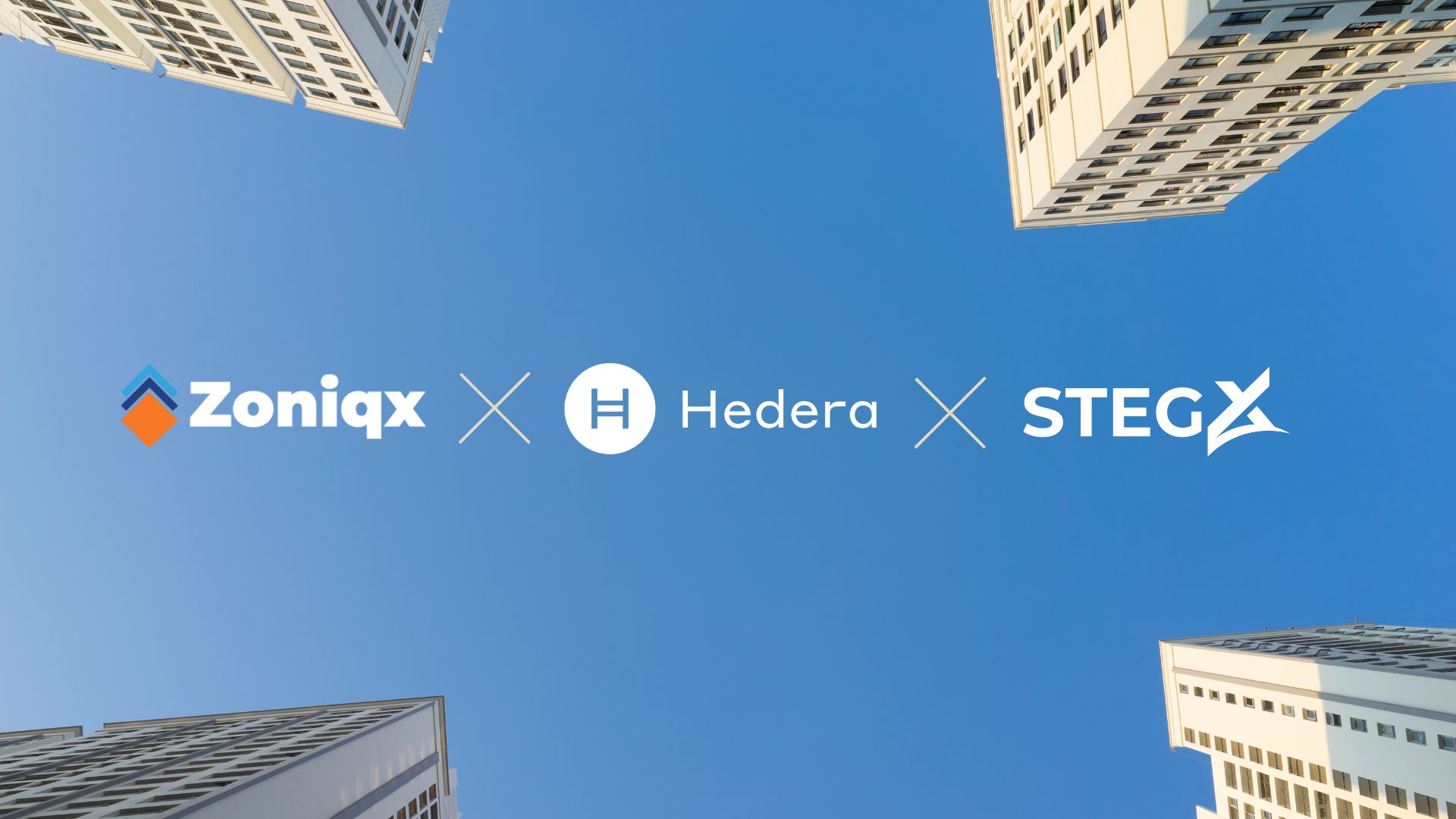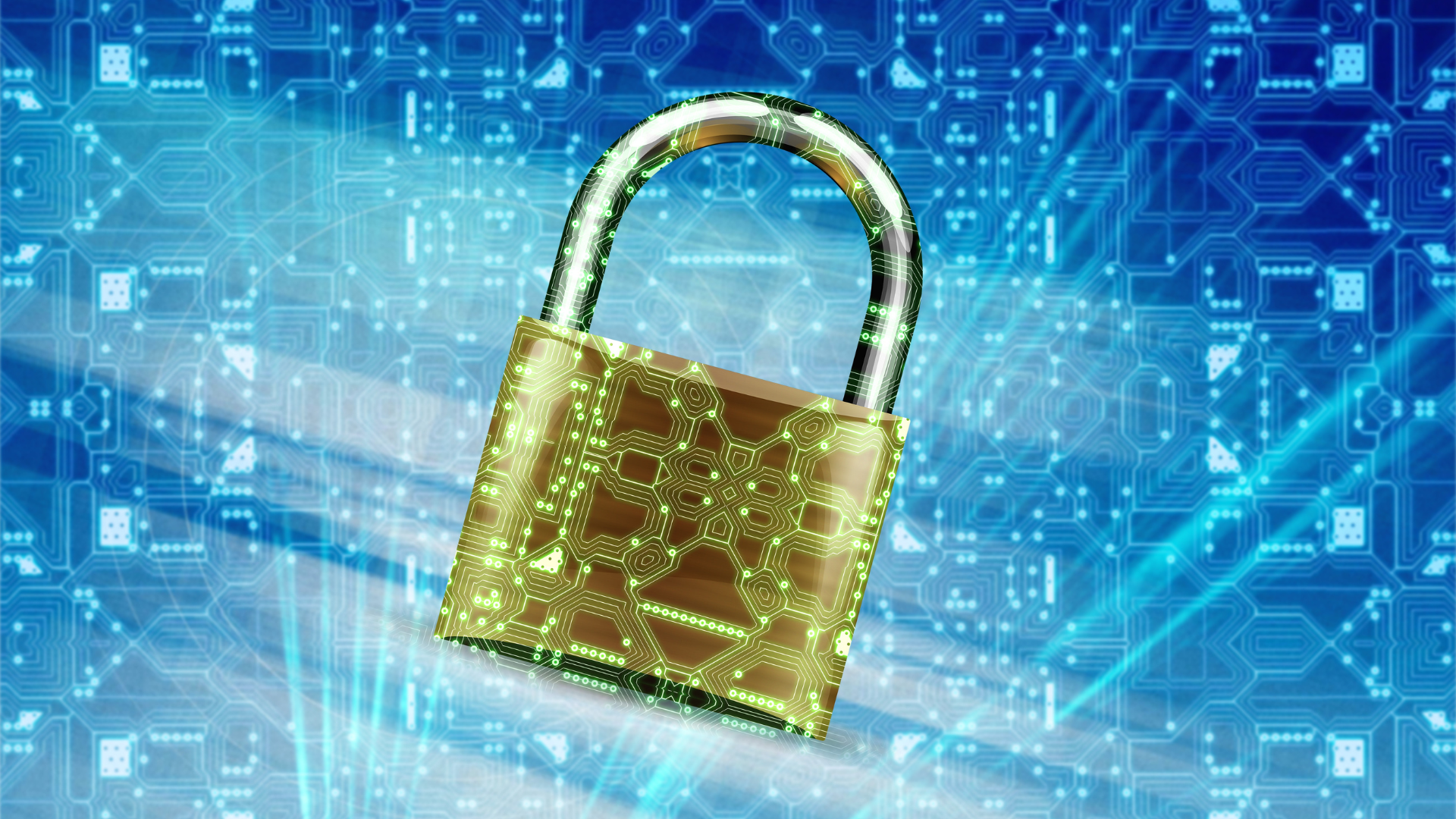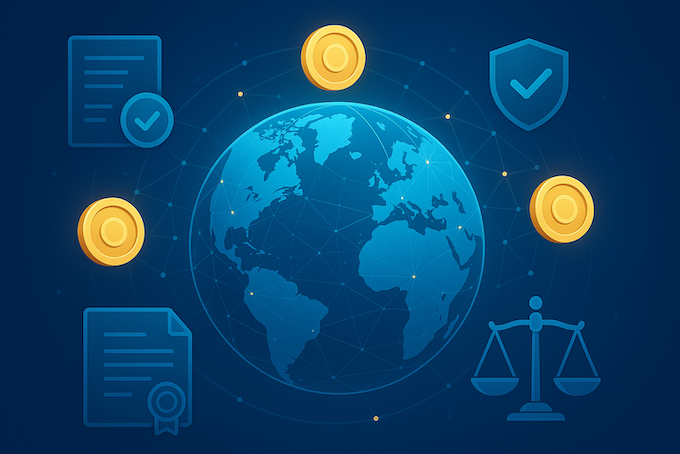25 Tokenization Use Cases: Owning Fractions of the Future
The world is on the cusp of a revolution, driven by a powerful force called tokenization. It's not just about crypto anymore - it's about fractional ownership, reshaping how we interact with everything from real estate and precious metals to art, renewable energy, and even our own data. Imagine owning a sliver of the Eiffel Tower, earning profits from a solar farm, or monetizing your fitness data - all thanks to the magic of Asset Tokenization, digital tokens representing real-world assets.
This list delves into 25 groundbreaking use cases across diverse industries, showcasing how tokenization is shattering traditional ownership models and empowering individuals like never before. From democratizing investments to streamlining complex processes and enhancing transparency, get ready to witness the power of fractions transforming the future, one asset at a time.
Are you ready to own a piece of the pie? Dive in and explore the endless possibilities of Owning Fractions of the Future through tokenization!
1. Capital Markets:
- Fractional Ownership: Accessibility to High-Value Assets: Tokenization significantly lowers the financial threshold required to invest in assets like commercial real estate, fine art, and private equity. This change enables individual investors to purchase tokens representing fractions of these assets, previously only accessible to wealthy individuals or large institutions. Diversified Investment Opportunities: Investors gain the ability to diversify their portfolios across a variety of asset classes without needing substantial capital. This diversification was traditionally limited to institutional investors due to the high entry costs. Enhanced Liquidity: The creation of a secondary market for fractional shares increases the liquidity of these assets. Investors can buy and sell tokens representing asset shares more quickly and easily than traditional asset transactions, which typically involve lengthy and complex processes.
- Streamlined Debt Issuance: Reduced Issuance Costs: Tokenizing bonds and loans cuts down the administrative and regulatory costs associated with traditional debt issuance, making it a more cost-effective option for companies. Efficient Process: The use of blockchain technology in tokenization streamlines the issuance process, reducing the time and complexity involved in creating and distributing debt instruments. Dynamic Secondary Market: The ability to trade tokenized debt on secondary markets enhances liquidity, making it easier for investors to buy and sell these instruments. This dynamism also aids in better price discovery, potentially leading to more accurate market valuations.
2. Real-World Assets:
- Real Estate Tokenization:Broader Investment Accessibility: Tokenization breaks down the high entry barrier in real estate investments, enabling individual investors to participate in markets that were traditionally dominated by large investors or investment groups. Simplified Transactions: The use of blockchain and smart contracts in tokenized real estate transactions automates and streamlines the process. This reduces the need for intermediaries, cuts down on paperwork, and minimizes the chances of human error. Increased Market Liquidity: Tokenizing real estate assets turns them into more liquid forms, allowing for easier and quicker trading. This is a significant shift from the traditional real estate market, known for its illiquidity and slow transaction times.
- Trade Finance Revolution:Enhanced Transparency and Security: Tokenization introduces a higher level of transparency and security in trade finance. By converting trade documents and invoices into tokens on a blockchain, each transaction becomes traceable and immutable, significantly reducing the potential for fraud and errors. Operational Efficiency and Cost Reduction: The digitization of trade documents streamlines processes, reducing the time and cost associated with paperwork, verification, and compliance in international trade. Facilitation of Cross-Border Transactions: Tokenization simplifies and accelerates cross-border trade. It addresses common bottlenecks in traditional trade finance, such as delays due to document verification and banking procedures, thereby facilitating smoother and faster global trade operations.
3. Natively Digital Assets:
- Art and Collectibles: Democratization of Ownership: Tokenization allows individuals to own fractions of valuable digital art and collectibles, making these assets more accessible. Market Expansion: Artists and collectors benefit from an expanded market, reaching a global audience and increasing the potential for sales. Authenticity and Provenance Tracking: Blockchain technology ensures the authenticity of digital assets, providing a transparent history of ownership and origin. Royalty Distribution: Artists can receive royalties directly through smart contracts, ensuring fair compensation for their work. Gaming and Virtual Goods: Asset Ownership and Trading: Players can truly own, buy, and sell in-game assets, transforming gaming economies. Interoperability Across Games: Tokenization can enable the use of virtual assets across different gaming platforms, enhancing the value and utility of these assets. Monetization for Creators: Game developers and content creators can monetize their creations more effectively through direct sales and royalties.
4. Certifications and Licenses:
- Educational and Professional Credentials:Secure Verification: Tokenized credentials simplify and secure the verification process, ensuring authenticity and preventing fraud. Ease of Access and Sharing: Individuals can easily access and share their credentials with employers or institutions, streamlining application processes. Lifelong Portfolio: Creates a permanent, unalterable record of achievements and qualifications.
- Intellectual Property Management:Efficient Rights Management: Streamlines the management of copyrights, patents, and trademarks. Direct Monetization: Enables creators to monetize their intellectual property directly, bypassing intermediaries. Global Reach: Facilitates wider distribution and licensing of intellectual property on a global scale.
5. Supply Chain Optimization:
- Enhanced Traceability and Transparency: Tokenization provides real-time tracking of products throughout the supply chain, enhancing transparency and accountability. Counterfeit Prevention: By securing the authenticity of products, it significantly reduces the risk of counterfeiting. Efficient Inventory Management: Streamlines inventory tracking and management, leading to more accurate and efficient operations. Data-Driven Insights: Generates valuable data for optimizing supply chain operations and predicting market trends.
6. Fractional Ownership of Renewable Energy Assets:
- Democratized Investment: Lowers barriers to investing in renewable energy projects, allowing smaller investors to participate. Increased Funding for Green Energy: Facilitates the flow of capital into renewable energy projects, boosting the sector's growth. Revenue Generation for Asset Owners: Enables owners of renewable energy assets to generate income by selling fractional shares. Enhanced Community Engagement: Communities can invest in local green energy projects, fostering a sense of ownership and commitment to sustainability.
7. Data Monetization and Privacy Control:
- Empowerment of Data Creators: Individuals gain control over their personal data, deciding who can access and use it. Monetization Opportunities: Offers individuals the ability to monetize their data by selling access to interested parties. Privacy Preservation: Ensures privacy through blockchain technology, allowing selective sharing of data. Trust and Transparency: Builds trust in data transactions with transparent and secure blockchain records.
8. Voting Systems and Governance:
- Enhanced Election Integrity: Blockchain-based voting systems ensure secure, tamper-proof, and transparent elections. Increased Voter Participation: Simplifies the voting process, potentially increasing voter turnout and engagement. Decentralized Decision Making: Facilitates decentralized governance in organizations and communities through secure, token-based voting. Trust and Accountability: Improves trust in governance processes with verifiable and immutable voting records.
9. Carbon Credits and Environmental Markets:
- Incentivizing Emission Reductions: Tokenization of carbon credits motivates companies and individuals to reduce emissions, aligning with global climate goals. Accessible Carbon Market Participation: Lowers barriers to entry, allowing diverse participants, including small businesses and individuals, to engage in carbon trading. Enhanced Transparency and Accountability: Blockchain technology ensures the authenticity and traceability of carbon credits, preventing fraud and double counting. Funding for Green Initiatives: Facilitates investment in environmentally friendly projects by linking them with carbon credit markets.
10. Decentralized Insurance (DeFi) Models:
- Peer-to-Peer Risk Sharing: Enables individuals and entities to share risks directly, without traditional insurance intermediaries. Customized Insurance Products: Offers flexibility to create tailored insurance products based on individual or group needs. Reduced Operational Costs: Minimizes administrative and overhead costs associated with traditional insurance models. Enhanced Accessibility and Inclusivity: Provides broader access to insurance products, especially in underserved or unbanked regions.
11. Retail:
- Tokenized Loyalty Programs: Retailers can offer more personalized and flexible rewards through blockchain-based tokens, enhancing customer loyalty and engagement. Customers could trade, gift, or redeem these tokens across various platforms or even convert them into other digital assets. Dynamic Pricing and Inventory Management: Retailers can leverage tokenization for real-time inventory tracking and dynamic pricing strategies, responding quickly to market demands and stock levels, leading to better resource allocation and customer satisfaction. Supply Chain Transparency: Tokenization provides end-to-end visibility in the supply chain, enabling consumers to verify the authenticity and ethical sourcing of products, thereby building trust and brand reputation. Consumer Data Management and Monetization: Customers can securely manage and monetize their consumer behavior data. By tokenizing this data, individuals can have control over who accesses their information and can be compensated for sharing it with retailers or marketers.
12. Healthcare:
- Secure Medical Records: Tokenization offers a secure way to store and manage patient health records. By converting these records into tokens, healthcare providers can ensure data privacy and security, making sensitive information accessible only to authorized parties. Improved Data Sharing for Treatment Efficiency: Streamlines the sharing of medical records between healthcare providers and patients. This efficient data exchange can lead to quicker diagnoses, more personalized treatment plans, and better overall patient care. Incentives for Medical Research Participation: Patients can receive tokens as compensation for sharing their health data for research purposes. This not only empowers patients but also accelerates medical research by providing valuable data to researchers. Decentralized Healthcare Services and Telemedicine: Tokenization paves the way for innovative healthcare delivery models. For example, patients could use tokens to access telemedicine services, pay for consultations, or participate in health-related community initiatives. This could significantly enhance access to healthcare, especially in remote or underserved areas.
13. Finance:
- Streamlined Global Trade Finance: Tokenization significantly enhances the efficiency of global trade finance. By digitizing trade documents and financial instruments, it reduces the need for physical paperwork, streamlines the verification process, and accelerates cross-border transactions. This modern approach addresses traditional bottlenecks in trade finance, such as delays in document processing and banking procedures, thereby facilitating smoother and quicker international trade operations. Automated Debt Instruments: The tokenization of debt instruments like bonds and loans revolutionizes how they are issued and traded. It enables the automation of interest payments and redemption processes, reducing administrative and operational burdens. This automation not only improves efficiency but also enhances transparency and security in debt markets. Furthermore, it opens up new possibilities for trading these instruments on secondary markets, providing improved liquidity and accessibility for a wider range of investors.
14. Energy:
- Tokenized Carbon Credits: Tokenization in the carbon credit market presents a groundbreaking approach to incentivizing emission reductions. By converting carbon credits into digital tokens, it simplifies the trading process, making it more accessible and transparent. This increased accessibility encourages more entities to participate in emission reduction initiatives, thereby fostering a more robust and dynamic market for carbon trading. The traceability and transparency afforded by tokenization also help in ensuring that carbon credits are not double-counted or misused, thus maintaining the integrity of the market. Peer-to-Peer Energy Trading: The tokenization of energy assets, particularly in renewable energy, enables decentralized peer-to-peer energy trading. This system allows individuals and businesses to buy, sell, or trade excess renewable energy, such as solar or wind power, within a community or microgrid. By facilitating direct energy transactions, tokenization can optimize the distribution and consumption of renewable energy, reduce dependency on traditional power grids, and promote the use of clean energy sources.
15. Media and Entertainment:
- Tokenized Music Rights: Musicians can tokenize ownership rights to their songs, offering tokens as a form of investment in their work. This approach allows artists to retain more control over their earnings and provides fans with a direct way to support and potentially benefit from the artist's success. It also streamlines royalty payments, ensuring artists receive their dues more efficiently. Fractional Ownership in Film and Media Projects: Tokenization allows for fractional investment in films, TV shows, and other media content. This opens up new funding avenues, allowing independent creators to raise capital more easily. Investors, in turn, get a chance to earn a portion of the project's revenue.
16. Gaming and Metaverse:
- Tokenized Virtual Assets in Gaming: Players can own, trade, or sell in-game assets like skins, weapons, or even virtual land, as these items are tokenized on a blockchain. This ownership is verifiable and secure, enhancing the value of in-game items and allowing for a real-world economy within games. Economic Models in the Metaverse: In virtual worlds, tokenization can create entire economies where users can earn, spend, and trade digital assets. This system can extend beyond gaming to other virtual experiences, providing a new level of interaction and transaction in the digital realm. Digital Identity and Reputation: Tokenization in the metaverse allows for the creation of unique, secure digital identities. Users can have a consistent identity across various platforms, with their reputation and achievements securely recorded on the blockchain.
17. Education and Research:
- Tokenized Educational Credentials: Universities and educational institutions can tokenize diplomas and certificates, ensuring their authenticity and making them easily verifiable. This process simplifies the validation of educational achievements for employers and educational bodies, reducing fraud. Decentralized Research Funding: Tokenization opens new avenues for funding research projects. Researchers can issue tokens to raise funds for their studies, offering donors a stake in the project's outcome or future revenues.
18. Luxury Goods:
- Fractional Ownership of High-Value Items: Tokenization allows for fractional ownership of luxury goods like yachts, private jets, and expensive artworks. This approach makes it possible for more individuals to invest in and enjoy these high-value assets. Enhanced Liquidity and Market Access: By breaking down ownership into smaller units, tokenization increases the liquidity of these typically illiquid assets, creating a more dynamic and accessible market. Secure and Transparent Ownership Records: Utilizing blockchain technology ensures secure and transparent records of ownership, enhancing trust and reducing the potential for disputes.
19. Debt Funds:
- Tokenization of Debt Funds: Involves converting debt fund shares into digital tokens, simplifying investment and redemption processes. This increases accessibility for a wider range of investors. Increased Liquidity: Tokenizing debt funds enhances liquidity, allowing investors to buy and sell shares more easily compared to traditional debt funds. Automated Management: Smart contracts can automate interest payments and fund management, reducing administrative overhead and increasing operational efficiency.
20. Private Equity Funds:
- Democratizing Investments: Tokenization lowers the entry barrier, allowing smaller investors to participate in private equity funds, which are typically reserved for high-net-worth individuals or institutional investors. Improved Liquidity: Traditionally illiquid private equity investments become more liquid through tokenization, enabling easier entry and exit for investors. Enhanced Transparency and Efficiency: Blockchain technology ensures transparent and efficient management of the fund, fostering trust among investors.
21. Alternative Assets:
- Fractional Ownership: Tokenization allows investors to own fractions of unique assets like art, antiques, or rare commodities, which were previously inaccessible due to high costs. Market Expansion: Opens a broader market for these assets, enhancing liquidity and valuation. Authenticity and Provenance: Ensures the authenticity of assets, maintaining a transparent history of ownership and origin.
22. Private Credit Opportunities:
- Direct Investment Access: Investors get direct access to private credit markets, traditionally dominated by institutional investors. Increased Transparency: Offers greater transparency in terms of the risk and return profile of private credit investments. Liquidity and Diversification: Improves liquidity in a typically illiquid market and allows for better diversification of investment portfolios.
23. Sovereign Debt Funds:
- Wider Investor Participation: Lowers the entry barrier, enabling smaller investors to participate in sovereign debt investments. Enhanced Trading Efficiency: Tokenization can streamline the trading process, making buying and selling more efficient. Transparency and Risk Management: Improves transparency in sovereign debt investments, aiding in better risk assessment and management.
24. VC Funds:
- Democratized Venture Capital Access: Makes venture capital investments more accessible to a broader range of investors. Real-time Valuation and Liquidity: Facilitates real-time valuation and improves the liquidity of venture capital investments. Streamlined Fund Management: Automates and simplifies the management and administration of venture capital funds, reducing costs and improving efficiency.
25. Gold and Other Precious Metals:
- Tokenization of Physical Metals: Allows for the tokenization of physical assets like gold, silver, and platinum, representing ownership digitally. Fractional Ownership and Accessibility: Lowers the investment threshold, enabling more investors to own fractions of precious metals. Enhanced Liquidity: Increases the market liquidity of these typically illiquid physical assets. Market Transparency: Offers real-time pricing and transparency, improving investment decisions and market dynamics. Secure and Efficient Trading: Facilitates secure and efficient trading of precious metal tokens on various platforms.
We've explored 25 groundbreaking examples of how tokenization is reshaping our world, from unlocking investment opportunities in previously inaccessible assets to streamlining complex processes and enhancing transparency. But this journey doesn't end here. Zoniqx, a leading Tokenization Platform as a Service (TPaaS), is at the forefront of this revolution, empowering individuals and businesses to take advantage of these transformative possibilities.
Zoniqx's innovative platform, known as Tokenized Asset Lifecycle Management (TALM), simplifies the tokenization process, adhering to the latest ERC-7518 protocol and ensuring security, scalability, and compliance. But Tassets goes beyond technology. Their commitment to democratizing tokenization through a user-friendly interface and their SecureConnect solution, which directly connects issuers with diverse liquidity options, make tokenization accessible and impactful for everyone.
Whether you're an investor seeking new opportunities, an entrepreneur wanting to raise capital efficiently, or an asset owner wishing to unlock liquidity, Zoniqx offers a powerful path forward. By partnering with Zoniqx, you're not just investing in fractional ownership - you're investing in a future where everyone has the potential to own a piece of the pie and build wealth in more diverse and exciting ways.
Embrace the opportunities of tokenization. Visit Zoniqx today and discover how you can be part of this transformative journey, owning fractions of the future and shaping a world where financial inclusion and innovative possibilities thrive. Connect with the team of Zoniqx here.



